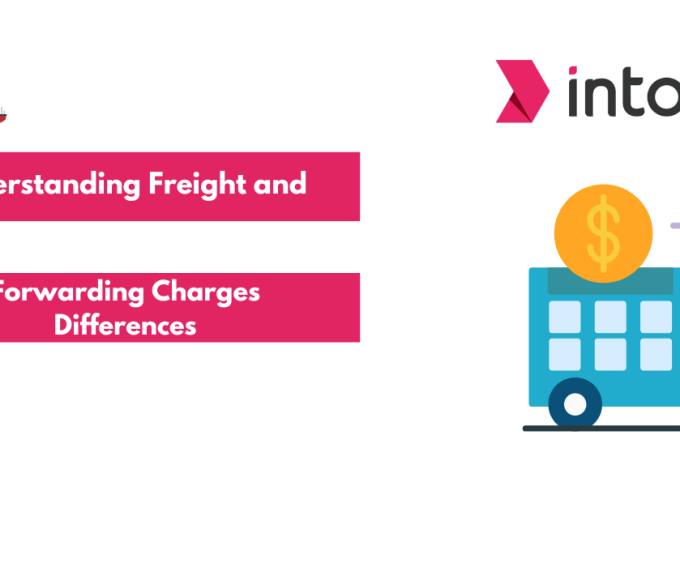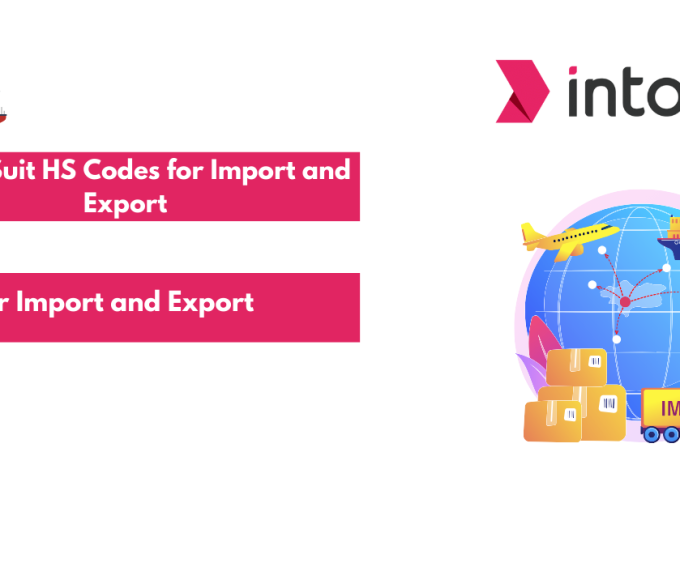Understanding shipping logistics is crucial in the maritime industry, and one key term you’ll frequently encounter is TEU. The TEU full form in shipping means Twenty-Foot Equivalent Unit. It is a standardized measurement used to describe the capacity of container ships and terminals. Whether you’re managing supply chains, shipping goods across the globe, or simply trying to grasp the complexities of maritime transport, knowing the TEU’s complete form in shipping is essential.
This guide will explain what TEU means, its importance in shipping, its dimensions and capacity, how it’s used and calculated, and how it impacts shipping capacity. By the end, you’ll clearly understand TEU and its role in your shipping operations.
What is TEU in Shipping?
The term TEU, or Twenty-Foot Equivalent Unit, is a standardized unit of measurement used in the shipping industry to quantify cargo capacity. It displays the dimensions of a container 20 feet long, 8 feet tall and 8 feet wide. This measurement provides a universal benchmark, allowing for the easy calculation and comparison of shipping capacity across various vessels and terminals.
TEU was originated in the 1950s by Malcolm McLean, a trucking entrepreneur who revolutionized the shipping industry by introducing containerization. McLean’s innovation standardized cargo transport, allowing goods to be efficiently packed, stacked, and shipped in containers of uniform size. The TEU has since become the cornerstone of modern shipping logistics, ensuring smooth operations across global supply chains.
TEU Container Dimensions and Capacity
A TEU container is designed with specific dimensions and capacities, making it the standard unit for measuring cargo volume in the shipping industry. Here are the key details:
- Internal Length: 19.4 feet (5.9 meters)
- Internal Width: 7.7 feet (2.35 meters)
- Internal Height: 7.9 feet (2.39 meters)
These internal dimensions determine the usable space within the container, which is crucial for efficiently packing goods.
- Tare Weight: Approximately 4,850 lbs (2,200 kg)
- Payload Capacity: Up to 55,126 lbs (25,000 kg)
- Cubic Capacity: Around 1,169 cubic feet (33.1 cubic meters)
These specifications highlight the TEU container’s ability to carry a significant volume of goods while maintaining a standardized structure that facilitates global shipping logistics. The balance between tare weight and payload capacity ensures that TEU containers can handle many cargo types, from heavy machinery to bulk goods.
Importance of TEU in Shipping
The TEU, or Twenty-Foot Equivalent Unit, is critical in the shipping industry. Here are key reasons why it is so important:
- Standardization: TEU provides a universal measurement system, allowing for consistent and efficient calculations of cargo capacity across different vessels and terminals worldwide. This standardization simplifies logistics, enabling smoother operations in global trade.
- Efficiency in Cargo Handling: Shipping companies can optimize the loading and unloading process by using standardized containers measured in TEUs. This efficiency reduces time spent in port and lowers operational costs, benefiting both carriers and shippers.
- Cost Management: TEU-based calculations help accurately determine shipping rates, as charges are often based on the number of TEUs used. This transparency aids in cost management and budgeting for businesses involved in international trade.
- Vessel and Terminal Design: TEU is fundamental in designing container ships and port facilities. Vessels are built with specific TEU capacities, influencing their size, design, and port infrastructure to accommodate these ships.
- Inventory Control: Understanding TEU capacity helps supply chain managers plan inventory levels, manage storage, and ensure timely deliveries. It also allows for better forecasting and efficient distribution of goods.
- Global Trade Facilitation: TEU is a common language across the shipping industry, promoting seamless communication and coordination between international trade partners, including shippers, carriers, and customs authorities.
Also Read: How To Choose The Best Freight Forwarder For FCL DDP Shipments?
Different Types of TEU Containers
TEU containers come in various types. Each container is designed to meet specific shipping needs. Here’s an overview of the most common types:
20ft Reefer Container
A 20ft Reefer (Refrigerated) Container is designed for transporting temperature-sensitive goods. These containers come equipped with built-in refrigeration units that maintain a controlled temperature range, essential for preserving the quality of perishable items during transit.
It is ideal for shipping products such as fresh produce, dairy, meat, seafood, and pharmaceuticals that require consistent temperature control throughout the journey.
20ft Open Top Container
The 20-ft Open-Top Container is designed to accommodate over-height cargo that cannot be loaded into a standard container. It features a removable or tarpaulin-covered top, allowing cargo to be loaded from above.
Companies commonly use it to transport oversized items such as heavy machinery, large construction materials, or any cargo that exceeds the height limitations of regular containers.
20ft Hard Top Container
The 20-ft Hard-Top Container is built with a detachable steel roof, providing additional protection for large or heavy materials that need to be loaded from the top. The roof can be removed entirely or opened partially to allow for easier loading of bulky items.
It is suitable for transporting large and heavy cargo, including machinery, steel coils, and other industrial materials that require top-loading and extra protection.
20ft Side Door Container
The 20-ft Side Door Container features side doors in addition to the standard rear doors, facilitating easy access to the cargo from the side. This design allows for more efficient loading and unloading, especially for items that require quick or frequent access.
It is ideal for transporting goods that need to be loaded and unloaded quickly or in confined spaces, such as retail products, construction materials, or equipment that needs to be accessed from the side.
20ft Flat-Rack Container
The 20-ft flat-rack container has collapsible sides, making it suitable for transporting awkwardly shaped or oversized cargo. These versatile containers can be loaded from the top, sides, or ends, depending on the cargo’s shape and size.
They commonly ship heavy machinery, vehicles, industrial equipment, or large pipes that cannot fit in standard containers. The flat-rack design ensures that even the most challenging cargo can be securely transported.
Are you looking to ship goods from India to the USA? Intoglo offers a wide range of containers suitable for Full Container Load (FCL) shipping, including reefers, open tops, and more. Whether you need temperature control or specialized containers for oversized cargo, Intoglo has you covered.
Also Read: 40-Foot High Cube Container Dimensions And CBM Calculation Guide
TEU vs FEU
This table highlights the key differences between TEU and FEU, with FEU offering double the length and capacity of a TEU, making it suitable for larger shipments or when transporting goods in bulk.
| Feature | TEU (Twenty-Foot Equivalent Unit) | FEU (Forty-Foot Equivalent Unit) |
| Length | 20 feet (6.1 meters) | 40 feet (12.2 meters) |
| Width | 8 feet (2.44 meters) | 8 feet (2.44 meters) |
| Height | 8.5 feet (2.59 meters) | 8.5 feet (2.59 meters) |
| Capacity | 1 TEU | 2 TEUs |
| Cubic Capacity | 1,169 cubic feet (33.1 cubic meters) | 2,385 cubic feet (67.5 cubic meters) |
| Tare Weight | 4,850 lbs (2,200 kg) | 8,490 lbs (3,850 kg) |
| Payload Capacity | 55,126 lbs (25,000 kg) | 59,525 lbs (27,000 kg) |
| Common Usage | Standard unit for smaller shipments | Larger shipments or bulk goods |
TEU Capacity of Global Shipping Vessels
The TEU capacity of shipping vessels is critical in global maritime logistics. It determines how much cargo a ship can carry. This capacity varies significantly across different classes of vessels, impacting their operational efficiency and role in the global supply chain.
Feeder Vessels:
- Capacity: Typically ranges from 1,000 to 3,000 TEUs.
- Usage: These smaller vessels are often used for short-distance routes or to transport goods from smaller ports to larger main ports, where they are transferred to larger ships. They play a crucial role in regional and coastal shipping.
Panamax Vessels:
- Capacity: Approximately 4,000 to 5,000 TEUs.
- Usage: Panamax vessels are designed to fit through the original locks of the Panama Canal. They serve as a bridge between smaller feeder vessels and the larger ships used for long-haul routes, primarily on transcontinental routes.
Post-Panamax Vessels:
- Capacity: Around 5,000 to 10,000 TEUs.
- Usage: These ships are too large to pass through the original Panama Canal locks but can navigate the expanded locks or Suez Canal. They widely use major global trade routes, particularly between Asia and Europe.
New Panamax (Neo-Panamax) Vessels:
- Capacity: Typically between 10,000 and 14,000 TEUs.
- Usage: Designed to pass through the newly expanded Panama Canal, these vessels represent a significant increase in capacity, allowing for more efficient long-haul shipping, especially on routes between Asia and the Americas.
Ultra Large Container Vessels (ULCVs):
- Capacity: Ranges from 14,000 to over 24,000 TEUs.
- Usage: ULCVs are the giants of the shipping world, and they are used primarily on the busiest and largest global trade routes, such as Asia to Europe. Their enormous capacity makes them highly efficient for transporting large volumes of cargo, but they require specific infrastructure at ports, including deeper berths and larger cranes.
Triple-E Class Vessels:
- Capacity: Up to 24,000 TEUs.
- Usage: The Triple-E class, named for “Economy of scale, Energy efficiency, and Environmental improvement,” represents some of the largest container ships in the world. These vessels maximize cargo volume while minimizing fuel consumption and emissions. They primarily operate on the Asia-Europe trade route, fully utilizing their massive capacity.
How do you calculate TEU for 20ft and 40ft containers?
TEU, or Twenty-Foot Equivalent Unit, is a standardized measurement used in the shipping industry to denote the capacity of container ships or terminals. It relies on the volume of a 20-foot container, considered one TEU. Here’s how to calculate TEU for both 20ft and 40ft containers:
20ft Container (Standard TEU)
A 20ft container is the baseline unit of TEU, so each 20ft container equals 1 TEU.
Example: If you have ten containers that are each 20 ft in length, the total TEU is 10×1=10 TEUs
40ft Container (FEU – Forty-Foot Equivalent Unit)
A 40ft container is equivalent to 2 TEUs because it is twice the length of a 20ft container.
Example: If you have five containers that are each 40 ft in length, the total TEU is:
5×2=10 TEUs
Summary
- 20ft Container = 1 TEU
- 40ft Container = 2 TEUs
Mixed Container Calculation
If you have a mix of 20 ft and 40 ft containers, simply calculate the TEU for each type and add them together. For instance, if you have 8 x 20 ft containers and 3 x 40 ft containers:
8×1 TEU=8 TEUs (from 20 ft containers)
3×2 TEUs=6 TEUs (from 40ft containers)
Total TEUs=8+6=14TEUs
This calculation helps plan cargo space, shipping costs, and vessel loading efficiency.
Conclusion
The TEU, or Twenty-Foot Equivalent Unit, is a fundamental concept in the shipping industry. It offers a standardized method for measuring and managing containerized cargo. Whether shipping a few containers or managing large-scale operations, knowing how to utilize TEU effectively can greatly enhance efficiency and cost management.
TEU not only helps determine the capacity of shipping vessels but also plays a crucial role in port infrastructure, cost calculation, and inventory control. From the 20-foot standard container to the more specialized 40-foot and beyond, the TEU system ensures that your commodities are shipped safely and efficiently across the globe.
Intoglo offers expert advice and a wide range of container options tailored to your needs if you’re planning to ship goods internationally, especially from India to the USA. Our team can help you select the suitable TEU container for your shipment. Contact Intoglo today to ensure your cargo is handled promptly and efficiently.









Leave a comment